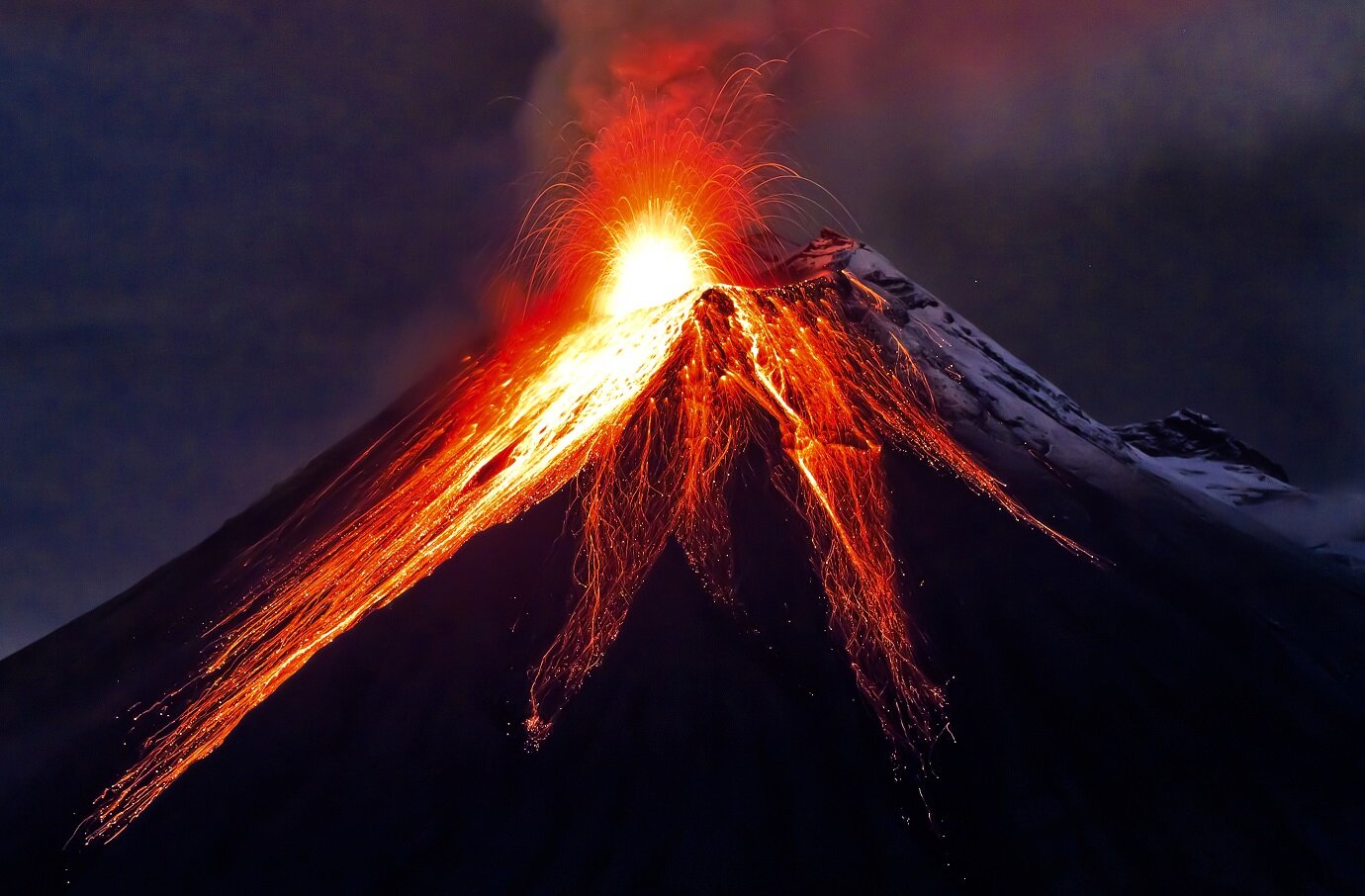For a long time, it was presumed that volcanic eruptions taking place on the bottom of oceans were boring compared to those that happen on dry land. After all, 'terrestrial volcanos' produce breathtaking, violent displays of fire and drama while their underwater counterparts merely generate some slow-moving lava pours.
Nothing could be further from the truth though. As scientists retrieved data from remotely operated vehicles deep in the North East Pacific, they discovered that phenomena known as megaplumes release so much energy that they could power an entire continent.
We are all familiar with the gorgeous show of light, fire and ash produced by conventinal terrestrial volcanoes - Image Credit: pxhidalgo via iStock/Getty Images - HDR tune by Universal-Sci
Undersea or 'submarine' volcanoes are underwater vents or fissures in the Earth's surface from which magma can erupt. Many undersea volcanoes are found near regions of tectonic plate formation, known as mid-ocean ridges. The volcanoes at mid-ocean ridges alone are predicted to account for three-quarters of all the planet's magma output.
Let's go back to the megaplumes. The University of Leeds team, comprised of just two scientists, uncovered that they comprise hot chemical-rich water and work in the same way as the atmospheric plumes we see originating from regular terrestrial volcanoes. They initially spread upwards and then outwards, carrying volcanic ash with them.
Megaplumes are enormous in size, with the volumes of water corresponding to forty million Olympic-sized swimming pools. They have been discovered above various submarine volcanoes, but their origin has remained unknown. The outcomes of this latest research demonstrate that they form quickly during the eruption of lava.
The science duo created a mathematical model which indicates how ash from these underwater eruptions spreads several kilometers from the volcano. They used the ash pattern deposited by a historic submarine eruption to reconstruct its dynamics. The model shows that the amount of energy liberated to carry the ash to the previously ascertained distances is immense. It would, in fact, be enough to power the entire United States.
A deep-sea volcanic eruption - Image Credit: National Oceanic and Atmospheric Administration via Eurekalert
The study indicates that deep-sea eruptions produce megaplumes to form, but the release of energy is so fast that it cannot be supplied from the erupted molten lava alone. Alternatively, the research concludes that submarine volcanic eruptions lead to the accelerated evacuation of reservoirs containing hot fluids within the crust of the Earth. As the magma pushes its way up toward the seafloor, it thursts this heated fluid along with it.
Sam Pegler, mathematician and one of the researchers, stated in a press release that their work contributes to the body of evidence that suggests that megaplumes are directly linked to the eruption of lava and are the driving power behind the transportation of volcanic ash in the deep ocean. It also explains that plumes must have formed in a matter of hours, producing a tremendous energy release rate.
David Ferguson, from the School of Earth and Environment and the other half of the research duo, added that observing a submarine eruption in person remains extremely difficult, but the development of instruments based on the seafloor means data can be streamed live as the activity occurs. ''Efforts like these, in concert with continued mapping and sampling of the ocean floor means the volcanic character of our oceans is slowly being revealed."
All things considered, it is challenging to detect a volcanic eruption on the ocean floor, so there is still a lot for scientists to learn about submarine volcanism. If you are interested in a more detailed overview of the study, check out the paper released in the science journal Nature Communications, linked below.
Further reading:
If you enjoy our selection of content, consider subscribing to our newsletter
FEATURED ARTICLES:










